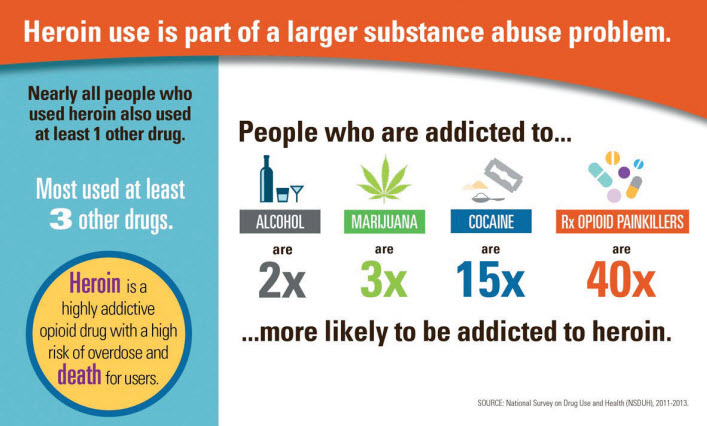 Cocaine, derived from the coca plant is native to South America where many people chew the plant’s leaves to reduce pain, thirst, hunger, while giving a boost of energy. By the 1880s, doctors were studying cocaine as a miracle anesthetic for surgeries. It was also being studied for a variety of health conditions including anxiety and pain. By the turn of the 20th century, fatalities were associated with cocaine and an article in The New York Times by Dr. Edward Huntington Williams warned of the drug’s dangers, calling its effects “cocaine-craze insanity.” In 1914, Congress passed the Harrison Narcotics Tax Act which banned the non-medical use of cocaine in the United States. Today, cocaine is classified as a Schedule II controlled drug with a high potential for abuse, which may lead to severe psychological or physical dependence.
Cocaine, derived from the coca plant is native to South America where many people chew the plant’s leaves to reduce pain, thirst, hunger, while giving a boost of energy. By the 1880s, doctors were studying cocaine as a miracle anesthetic for surgeries. It was also being studied for a variety of health conditions including anxiety and pain. By the turn of the 20th century, fatalities were associated with cocaine and an article in The New York Times by Dr. Edward Huntington Williams warned of the drug’s dangers, calling its effects “cocaine-craze insanity.” In 1914, Congress passed the Harrison Narcotics Tax Act which banned the non-medical use of cocaine in the United States. Today, cocaine is classified as a Schedule II controlled drug with a high potential for abuse, which may lead to severe psychological or physical dependence.
After an analysis of more than ten million workplace drug tests, cocaine made headlines in this year’s Quest Diagnostics Drug Testing Index™ (DTI) report because drug test results indicating cocaine use rose 12 percent in 2016. This increase reflects a seven-year high which has led to a trend of consecutive year increases of cocaine use in the workplace – both in federally mandated, safety-sensitive positions like transportation workers as well as general U.S. workers. Overall, cocaine drug use has fluctuated in the U.S. general workforce with its highest levels in 1998 and its lowest levels in 2012 according to the DTI.
Even more troubling is that positive drug tests indicating cocaine use are twice as high when the test was conducted in a post-accident scenario as compared to pre-employment tests.
While a positive test doesn’t necessarily prove drug use caused the accident, it does raise the question as to whether it played a role in the incident.

The most current findings from the National Survey on Drug Use and Health tell us:
- An estimated 8.2 percent of adults (aged 26 or older), or 17.1 million people, currently use an illicit drug
- 580,000 young adults (ages 18-25) and 1.2 million adults currently use cocaine
- Approximately 31,000 adolescents (ages 12-17), 229,000 young adults, and 637,000 adults suffer from a cocaine use disorder, pointing to dependence and recurrent use that affects health and responsibilities at work, home, or school
Visit QuestDiagnostics.com/DTI for the full report and data.
To learn more about drug testing, visit our website or contact us online or call/text 843-972-3287.

 The old adage, “time is money” has never been more true. It didn’t take long for the management team of a small asphalt company in South Carolina to realize how much money was literally waiting for them when they evaluated their current drug testing service provider. Having used a local urgent care clinic for their drug test collections for years, company representatives didn’t realize there were options available to them until they were approached by a representative from Carolina Testing based in Conway, SC.
The old adage, “time is money” has never been more true. It didn’t take long for the management team of a small asphalt company in South Carolina to realize how much money was literally waiting for them when they evaluated their current drug testing service provider. Having used a local urgent care clinic for their drug test collections for years, company representatives didn’t realize there were options available to them until they were approached by a representative from Carolina Testing based in Conway, SC.


 How can the remaining 80 percent of employers get informed and gain confidence when facing this challenge? Experts suggest that companies add specialized workplace training for supervisors, implement drug testing programs, and strengthen their policies with more precise language about drug use without a prescription, employee impairment, and return-to-work protocols.
How can the remaining 80 percent of employers get informed and gain confidence when facing this challenge? Experts suggest that companies add specialized workplace training for supervisors, implement drug testing programs, and strengthen their policies with more precise language about drug use without a prescription, employee impairment, and return-to-work protocols.